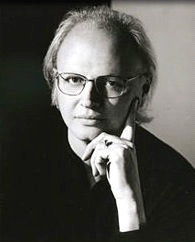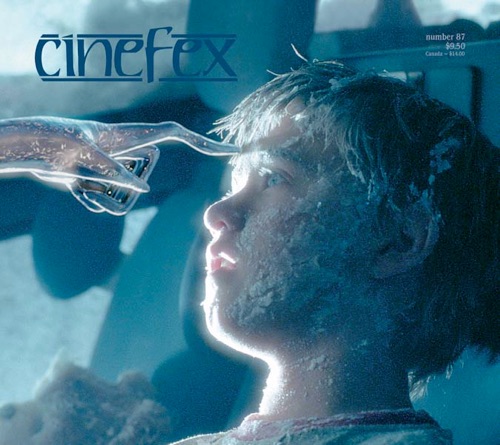Here’s a note I wrote in reply to a reader who wanted to know a little more about my Cinefex article on the making of A.I.
A.I. was one of my favorite and most daunting assignments for Cinefex. Favorite because I am a huge fan of Spielberg and Kubrick, and I knew this was going to be a unique fusion of the two; and most daunting because I'd been reading about the production for years and I was aware of the massive secrecy surrounding the making of the film. Spielberg fiercely guarded the memory of his friend Stanley Kubrick's project, and it was the one script in town that nobody would share.

One of the moments that unlocked my Cinefex story was when I visited ILM and I got to sit down for 45 minutes with their senior visual effects supervisor Dennis Muren. It was nerve-wracking enough to be interviewing Dennis for the first time in my career, but I also knew that I was going to be firing some probing questions at him about his early involvement with the project when he visited Stanley Kubrick to discuss ILM's potential involvement following Jurassic Park. But Dennis was friendly and receptive, and as I exited the room ILM’s publicity director Stephen Kenneally congratulated me on the interview.
ILM was a treasure trove of information, from miniatures supervisor Steve Gawley to visual effects supervisor Scott Farrar and animation supervisor Hal Hickel, they gave me more information than I could possibly squeeze into one article. ILM’s conceptual art was stunning, and when I first saw the shot flying over the ice '2000 years later' my jaw was on the floor.

Another major victory for me was my interview with animatronic artist Chris Cunningham, who did conceptual robot work for Stanley. Chris is a reclusive fellow, but he's a friend of friends in England and, after some gentle persuasion, I got him to share details of his work, which I'd only read about as rumors. I told Chris he had to set the record straight to honor Stanley, and he agreed. Kubrick's storyboard artist Chris Baker, was another valuable part of that connective tissue, and very generous with his time.
I was nervous in my interview with special effects man Mike Lantieri, not because Mike is an intimidating person, he's a lovely chap, but because I interviewed him, at his request, in a little diner in Burbank. I always seek privacy when conducting Cinefex interviews, but just before Mike arrived a flood of senior citizens piled in for the senior special. It was surreal to be talking about this ultra-secret project surrounded by all the blue rinses of Burbank, but I don't think any of them could hear us, due to the preponderance of hearing aids.

Cinefex publisher Don Shay's choice of cover image blew me away. Again thanks must go to ILM for going the extra yard in rendering us that exclusive image of the supermecha hand reactivating David. It was an inspired cover image, with obvious parallels to E.T. for any Spielberg scholar -- E.T. had inspired Kubrick to offer Spielberg A.I. to direct, so it was poignant, as well as a beautiful shot.
If you are hungry for more information about A.I., I can recommend Jane Struthers' book From Kubrick to Spielberg: The Making of A.I., which contains great imagery and info from the Kubrick archives. Even that is still not the complete story -- I've gleaned more details since then -- but it gives a unique perspective into the mind of Stanley Kubrick, where this mysterious film originated.


